Box.com
This document provides the steps required to configure the Box.com Inspector.
Quick DetailsRecommended Agent: On-Demand
Supported Agents: On-Demand or Self-Managed
Is Auto-Discovered By: N/A
Can Auto-Discover: N/A
Parent/Child Type Inspector: No
Inspection via: API
Data Summary: Here
Enterprise Account: API Key AccessThe Box.com Inspector requires you have an Enterprise account with Box.com.
Inspector Setup Preparation
Log in to the Box.com console
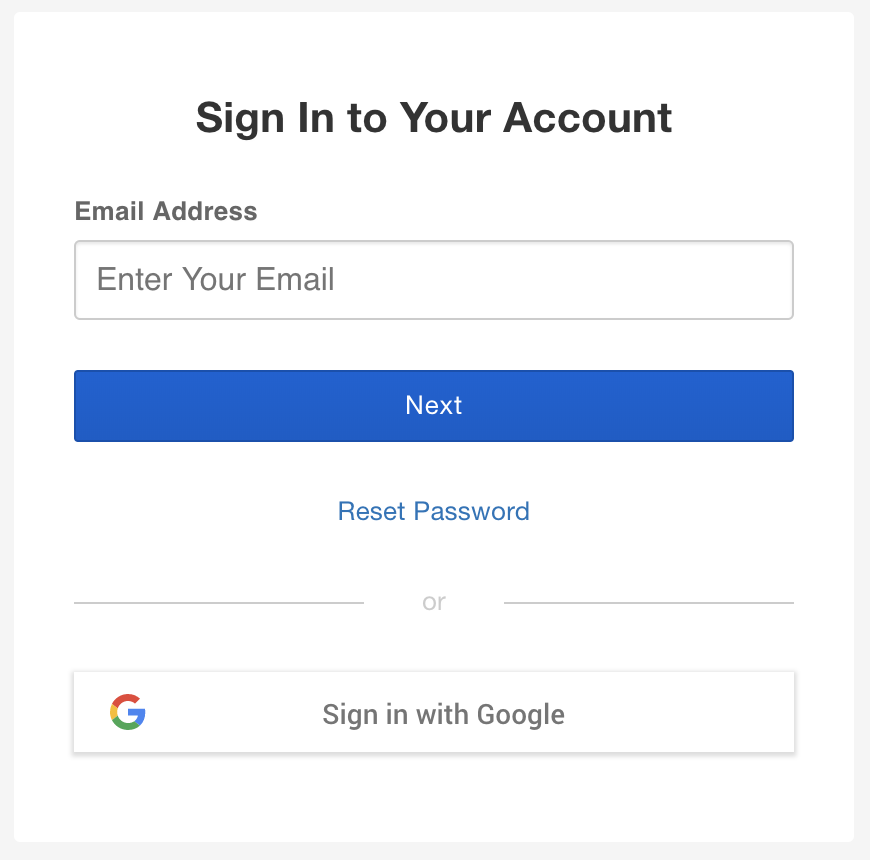
Create an App Integration
Click on the Dev Console tab in left-side navigation bar.

Click on the My Apps tab on the left-side navigation bar.
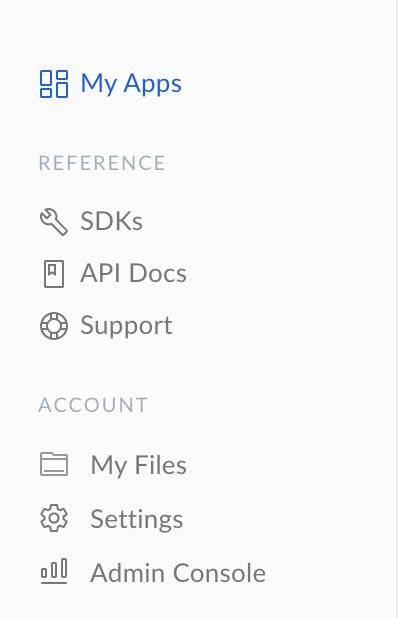
Click on the Create New App button
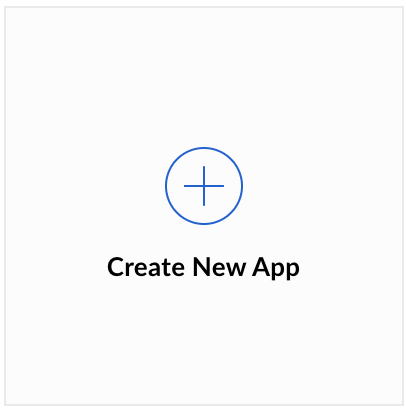
Choose Enterprise Integration as shown below. The click the Next button.

Choose the OAuth 2.0 with JWT option. Then click the Next button.

Fill the name of your application. Click on the Create App button.
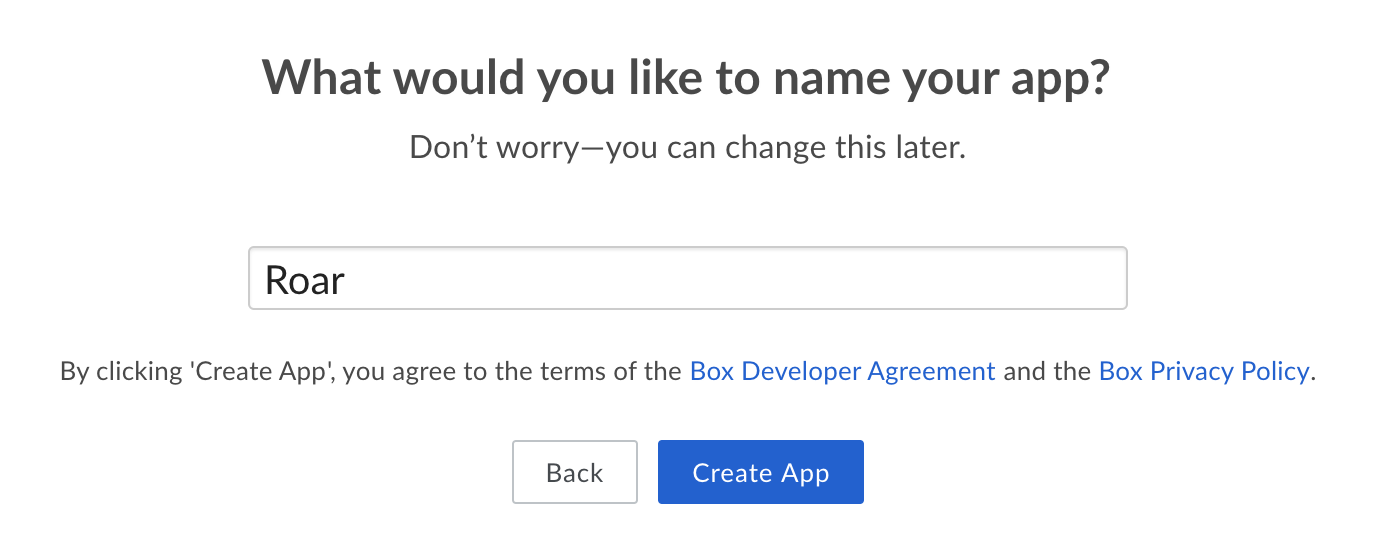
Finally click on the "View Your App" button.
Configure App Integration
Scroll down to the Application Access section. Click on the Enterprise option.

Scroll down to the Application Scopes section. We recommend you select all the options but you can choose which items the inspector can read.
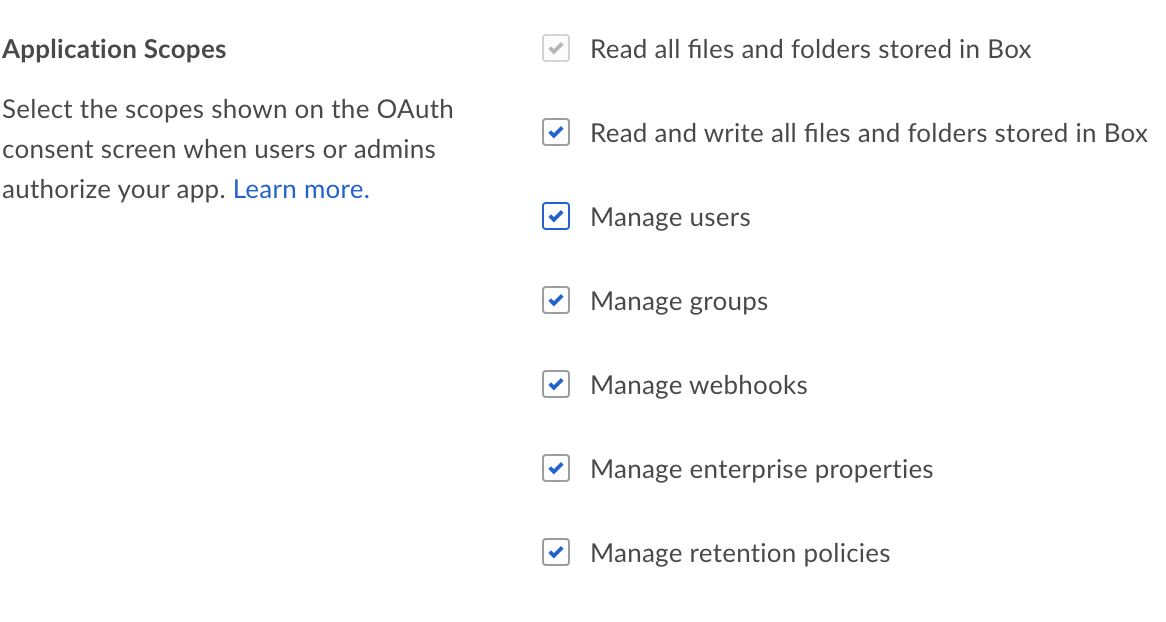
Scroll down to the Add and Manage Public Keys section. Click on the Generate a Public/Private KeyPair button.
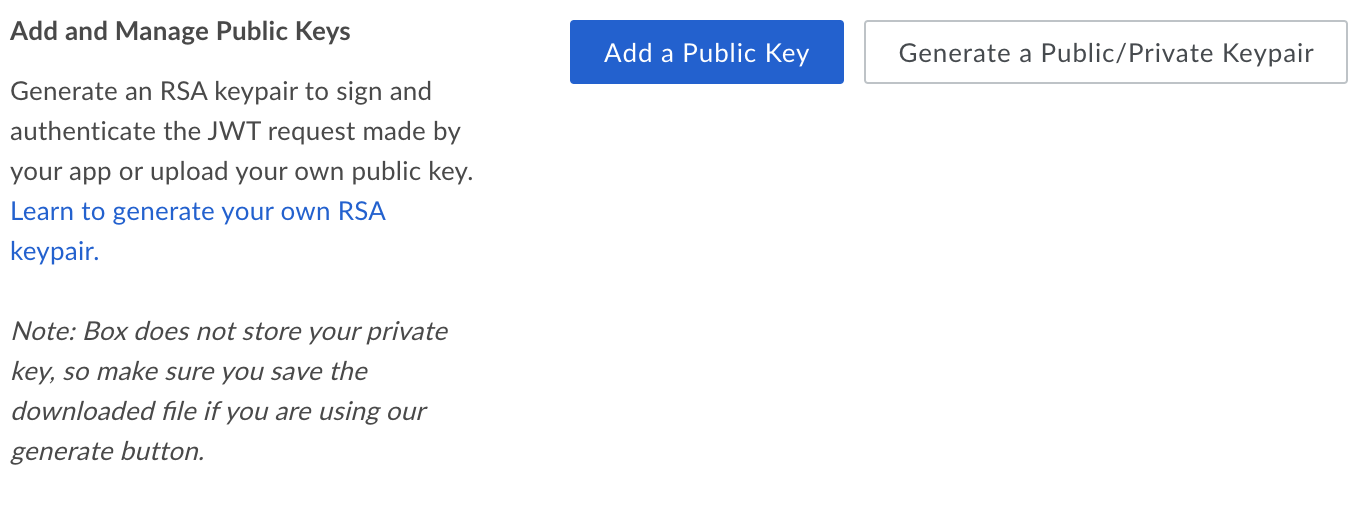
Two-Factor Authorization is RequiredIt may require you provide your two-factor authorization credentials again or turn on two-factor authorization first.
Save the json file to a secure location, you will use it below to setup the inspector.
Liongard Inspector Setup
In Liongard, navigate to Admin > Inspectors > Inspector Types > Navigate to the Box.com Inspector > Select Add System.
Fill in the following information:
- Environment: Select the Environment this System Inspector should be associated to
- Friendly Name: Suggested "Box.com [Environment Name]"
- Agent: On-Demand Agent
- Inspector Version: Latest
- Client ID: The Client ID from the JSON file you saved above. This can be found in the field name clientID
- Client Secret: The Client Secret from the JSON file you saved above. This can be found in the field name clientSecret
- Key ID: The Key ID from the JSON file you saved above. This can be found in the field name publicKeyID
- Private Key: The Private Key ID from the JSON file you saved above. This can be found in the field name privateKey
- Keyphrase: The Keyphrase ID from the JSON file you saved above. This can be found in the field name passphrase
- Enterprise ID: The Enterprise ID from the JSON file you saved above. This can be found in the field name enterpriseID
- User ID: The User ID from the JSON file you saved above. This can be found in the field name userID
- Scheduling: The Inspector will default to run once a day at the time the Inspector is set up. Here you can adjust the schedule
Select Save. The Inspector will now be triggered to run within the minute.
Updated 3 months ago
